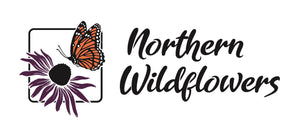Harvesting Sweetness: Birch Tree Syrup

In areas where maple trees can not grow people have turned to making syrup out of birch sap. The sugar content in birch sap is not as high as sugar maple sap so there is more boiling required than with maple sap.
The end result is a sweet and complex tasting syrup that goes great with savoury dishes especially smoked fish. The taste of birch syrup is sometimes described as containing flavours of raspberries and tart cherries or as a combination of balsamic vinegar and molasses with a hint of fruit. If trying this out, you should not expect the sweet flavour of maple syrup, but something else entirely.
Birch sap is drunk as a beverage and used for creating other products by First Nations peoples in many parts of North America. It is rich in minerals like calcium and potassium. It also contains antioxidants, sugar of course, vitamins C and B, and 17 amino acids. Birch syrup has also been used for centuries to sweeten and flavour foods, so this is not a new process. We have First Nation cultures to thank for both birch and maple syrup.

Tapping Trees
The same equipment for taping maple trees can be used to tap birch trees. You'll need tree taps, way to collect the sap; either tubing with bags or a bucket that hangs from the tap. There are many variations on the set up, choose whatever works best for you and what you have. You'll also need a drill and drill bit that is the proper size for your tree taps.
Make sure your equipment is cleaned as well as close to sterilized as you can get it. If your equipment is not clean it will spoil your sap quickly and possibly harm the tree you are harvesting from.

Ideally you want to find a spot where you can tap several trees in an area to cut down on labour and get as much sap for your effort. The birch sap will start running after maple taping season is over, when the day time temperatures are around 10. The birch tapping season ends when the buds come out, at this point the sap is no longer good to collect, it becomes cloudy and will be more bitter.
The trees you choose need to be larger than 10” in diameter where you are tapping them. I like to choose the southern facing side of the tree because it will warm up faster and have more sap running. When drilling the hole for your tap you want to make sure you do not go too deep, I make sure of this by marking 1 ½ inches on the drill bit. Drill at a slight upward angle, only a couple of degrees off perpendicular so you get some help from gravity.
When you are done with the tapping process it is important to plug up the hole in the tree you have created. I do this by removing a small branch from the tree, remove all the bark and carve it so that it can be hammered into the hole. The sap needs to be collected daily while its flowing and you are in the collection phase of the process.

Boiling the Sap
As with maple sap, you will need to commit to a lengthy boiling process to boil the sap down to syrup. It is difficult to estimate how long this will take, but plan for approximately 6 hours and monitor it closely towards the end of the process.
It is highly recommended to do this outside. The goal is to boil off litres and litres of water which will all go into the air then condense on your walls and windows if done inside. Even with proper ventilation, it will make your house extremely humid and warm.
It's hard to control the temperature of a fire, but try to control the boiling as much as you can, you do not want an aggressive rolling boil, instead a constant gentle boil will be best for your syrup.
As you start boiling off the water you will notice impurities condensing together. Straining the sap as you go to will remove these impurities and improve the taste. If you need to take a break from boiling and continue on another day you need to strain and refrigerate the sap as it does not keep well when the water content is high.

Storing the Syrup
When you’ve boiled off the majority of the water and the syrup has reached a consistency or sugar content that you are happy with strain again and jar. Follow a jarring procedure to insure a vacuum tight seal and have the best storage possible. I have stored homemade birch syrup for two years in a cold room with no issue with quality.


@LynwoodWagner, Thank you so much for sharing these details! It’s definitely a bit of an acquired taste, but we love it! The barbecue sauce is fantastic haha
Last 3 years have been making black birch syrup in Northeast, TN. We tap maples and walnuts in early to mid January but birch does not run till late March and that is only 0.4% sugar vs 1.8% for maple. Rule of 86 says you need 215 gallons sap / gallon syrup.
Last week before leafout (and abrupt flow halt) is about 0.7%. Simmering at 180 F in stainless or aluminum produces a light syrup…it just takes forever. More information on reverse osmosis, freeze-thaw and vacuum boiling (110 F) technologies available on request. Love the way you explain the use /exotic nature of flavor! Polite comments about ours are that it would be good in barbeque sauce.